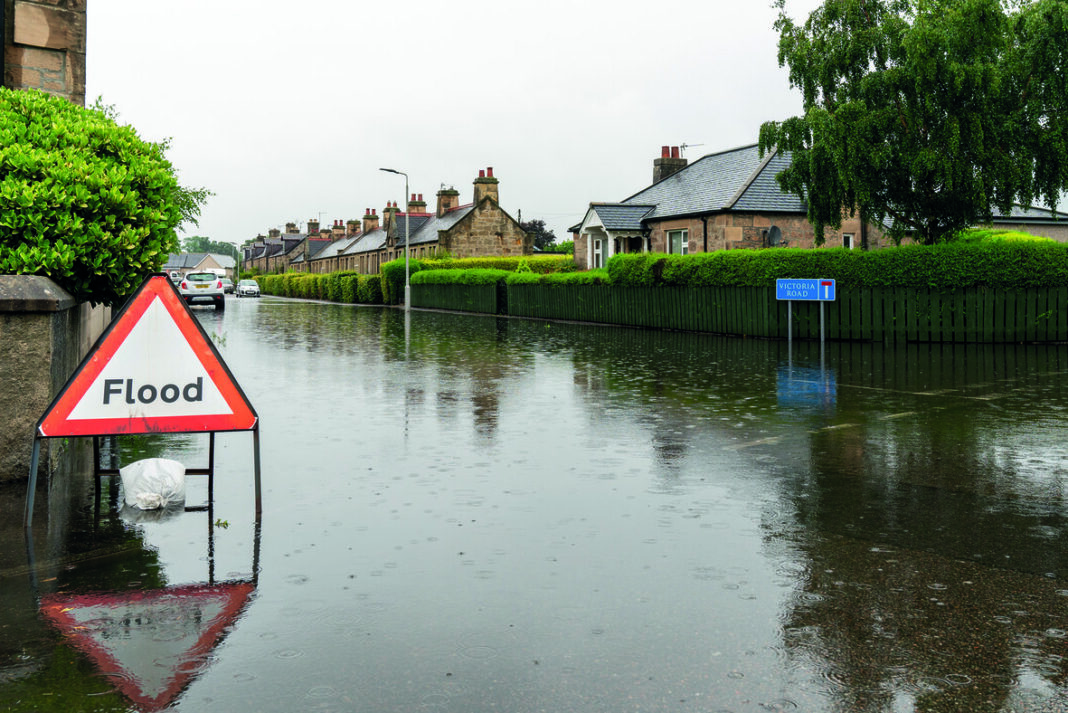
Image: JASPERIMAGE, Shutterstock
A new study has highlighted the need for good practice guidance in handling flood risk and groundwater issues within Scottish Building Standards.
The study, which was commissioned by the Scottish Government and conducted by JBA Consulting and Glasgow Caledonian University, sought to develop updated guidance to ensure buildings are safe from flooding and groundwater problems.
A mix of research in the study, as well as an online survey targeting eight local authorities from different areas in Scotland – including Aberdeenshire, Angus, Argyll and Bute, Clackmannanshire, Edinburgh, Highland, Orkney, and Scottish Borders. The researchers also received input from industry professionals.
The study concluded that, by adopting best practices and improving training and collaboration, Scotland can better protect its buildings and residents from flooding risks.
According to the researchers, confusion arises from the different responsibilities of planning and building standards officers. Planning applications focus on avoiding and minimising flooding, while building standards officers ensure the structure and fabric of individual buildings meet the necessary standards – including through the unique ‘Building Warrant’ application process in Scotland. The study emphasises that property flood resilience (PFR) guidance should be relevant for building standards to address property-level flood resilience effectively.
Professor Billy Hare, co-director of Glasgow Caledonian University’s BEAM Research Centre, explained, “One of the main findings was that flood and groundwater issues are usually addressed at the planning stage by planning and flooding officers. This means that building standards officers, who check if buildings meet the rules, often don’t get involved in these issues. As a result, they rarely check if buildings are protected against flooding, and PFR measures are almost never considered. This is partly because PFR hasn’t been widely adopted in Scotland yet, and there’s a strong focus on avoiding flood risks altogether.”
Professor Slobodan Mickovski, who co-authored the report with Professor Hare, added, “When building standards officers do check for flood-related compliance, there isn’t a single approach used across all local authorities. Different methods include involving flood officers, using SEPA maps, reviewing flood-risk assessments (usually done at the planning stage), site investigation reports, and consulting structural engineers. Common checks involve looking at where the development is located, the height of the finished floor, and drainage. The most used documents for these checks are the Building Standards Technical Handbooks, indicating that these handbooks should be updated.”
The study stressed the importance of integrating good practice guidance, specifically for Building Standards officers, to bridge the gap between planning and building warrant stages. It highlighted a publication called ‘Code of Practice for Property Flood Resilience’ (C790, 2nd Edition) as a valuable resource. The report suggests incorporating this good practice approach into technical handbooks and providing more training for building standards officers on flood risk and PFR. This could include more detailed guidance, training programmes, and encouraging better teamwork among building standards, planning, and flood officers.
Finally, the study noted that, in England, post-installation audits for PFR are part of grant structures, but, in Scotland, they depend more on property owners. The researchers say this means these audits may be beyond the remit of local authorities and could be overlooked, despite being critical to quality control assurance.
Professor Hare added, “By addressing these gaps and fostering a more unified approach, building standards officers in Scotland can play a crucial role in ensuring buildings are resilient to flood risks, ultimately safeguarding both properties and residents.”








